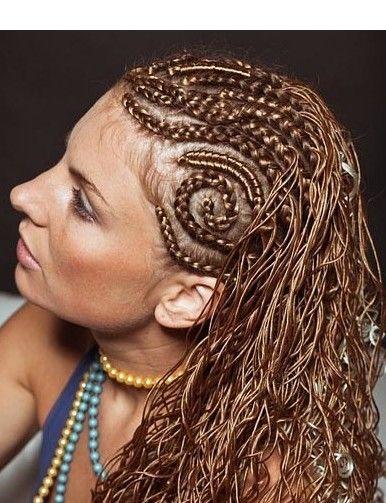
French braids: weaving tricks, care features and video tutorials
Contents:
Braids is another name for African braids based on French braids, derived from the English "braid", Meaning" scythe ". The peak of their popularity was at the end of the XNUMXth century, but the fashion is cyclical, and among the youth hairstyles, they again took their place of honor. The process of creating them is a very painstaking business, and today some companies even produce braiding machines, but do they make sense? And how to do such a hairstyle without third-party devices?
Varieties and features of weaving
The most common option is classic straight braids, braided from many small strands equal in width, not in contact with each other: it is this styling option that prevails in most photos with her participation.
However, in reality, the pattern of weaving and connecting the finished braids is not one, but their main difference is the level of complexity and the time spent on the hairstyle.
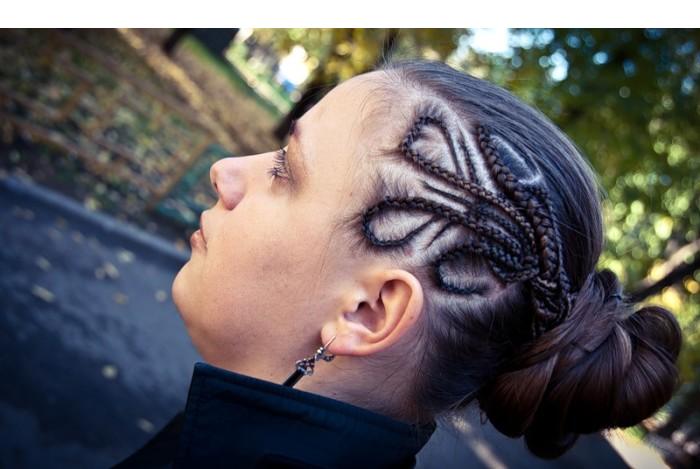
Direct braids - you need to weave according to the principle of a French braid, picking up a new thin strand for each next link. Braids are located parallel to each other, however, they can go both from the forehead back and from the central or side parting.
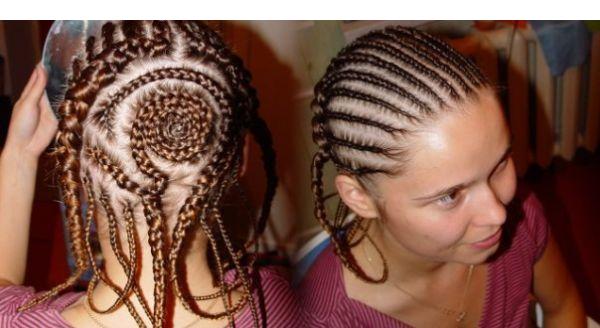
Geometric Brades - are often performed in the same way as straight lines, i.e. through the technology of the French braid, but the directions of weaving are changed: the braids are at an angle to each other and form many zigzags when looking at the joint.
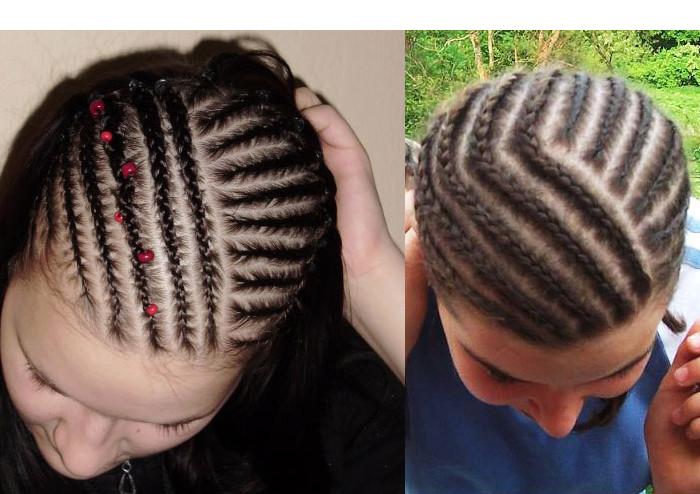
Waves and eights - a more complicated option in execution, since it requires a soft and uniform bend in each section, therefore, it cannot be done on your own.
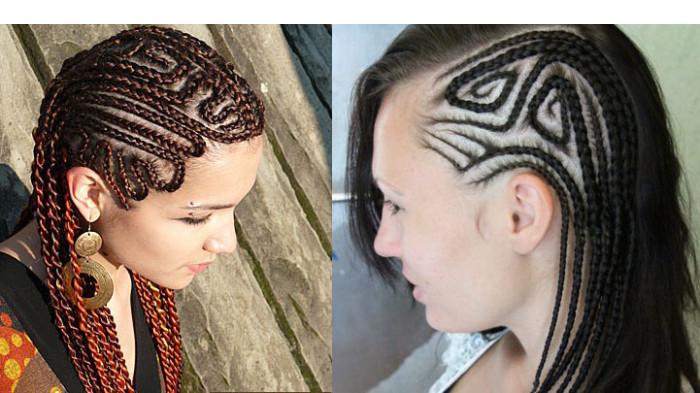
It should also be said that braids are often performed using artificial material: kanekalon, pony, zizi, etc. Moreover, in the photo, it is almost impossible to recognize your hair and synthetic (if they are within the same color range), but the total volume of the hairstyle and, sometimes, the length increases. With the addition of such material, the duration of wearing the braids is doubled.
What does classic technology look like?
- Weaving braids is very simple: prepare a comb with a thin handle (it is convenient to use it to divide the partings), silicone rubber bands or kanekalon, to which glue is added. Hair should be washed without using a mask and dried well.
- Divide the entire canvas into an equal number of not too large parts with vertical parting from the edge of the growth line to the back of the head. Their approximate number is 16-20, but the numbers depend on the density of the hair.
- If you want traditional braids, start braiding from the top, adding a new section of hair from below at each step. If you want a lot of thin braids, after parting, break the hair into horizontal layers and work from the bottom up.
- Kanekalon is placed in straight braids at the moment of intersection of the weave with the nape line, if the hair is long, and approximately in the middle of its length for short strands. The tip is most often sealed to improve hold, but you can use regular thin silicone rubber bands as well.
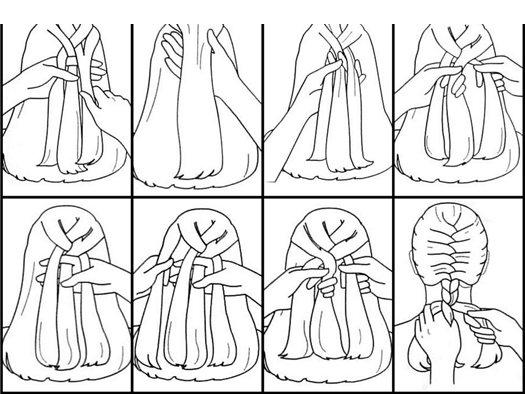


Watch this video on YouTube
Braids can be weaved on hair from 10 cm in length, and any artificial material is usually used to increase it.
In a shorter haircut, the ends will stick out from the initial links, which in the end can affect not only the appearance, but also the durability of the hairstyle. The approximate duration of work is 3,5-4 hours.
Hair stylist recommendations
Braids - long-term styling: with the right attitude towards her, you can walk with such pigtails for up to a month, after which you still have to intertwine them, since the hairs that have been knocked out during wearing will create a fluffy cloud and give untidiness to the overall image.
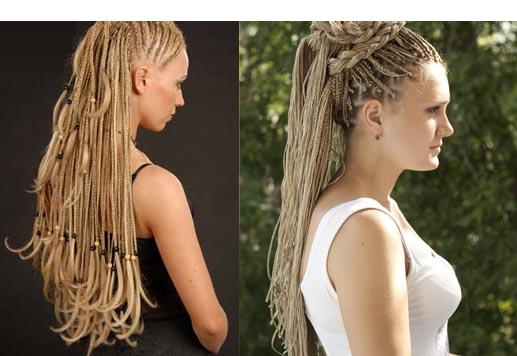

- If you have done braids, shampooing can be done less often than usual: for girls with quickly oily roots, the intervals between this procedure increase to 3 days, for owners of normal scalp - up to 7 days. This is due to the fact that the hair is constantly collected and gets dirty much more slowly. In addition, on braided curls, the degree of freshness is not seen as easily as on loose ones.
- As for the products that can be used, you will have to refuse from various masks, balms, conditioners and indelible serums. But especially clear ban imposed for oils and other products with a fatty base. This is due to the fact that it will be extremely difficult to wash such mixtures out of the hair.
- Thus, the only thing that allows you to use braids is shampoo, which is applied only to the roots and scalp: it is undesirable to even distribute it along the length. At the same time, make sure that after the pigtails are carefully rinsed under running water.
- Numerous photos on the network confirm that braids fit perfectly into classic tails and braids, but one cannot help but notice that the final image is far from office and business, therefore, they are most often made on vacation or at sports camps.
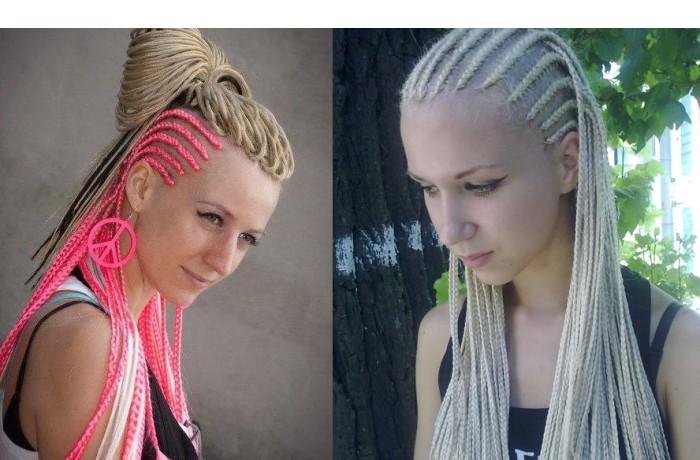

Due to the fact that braids are incompatible with classic multi-step care, hair in such a hairstyle (especially if you remember that the braiding is very tight) are stressed and do not receive additional nutrition, moisture and other nuances. Therefore, after wearing braids, it is necessary take a breakfilled with active grooming.
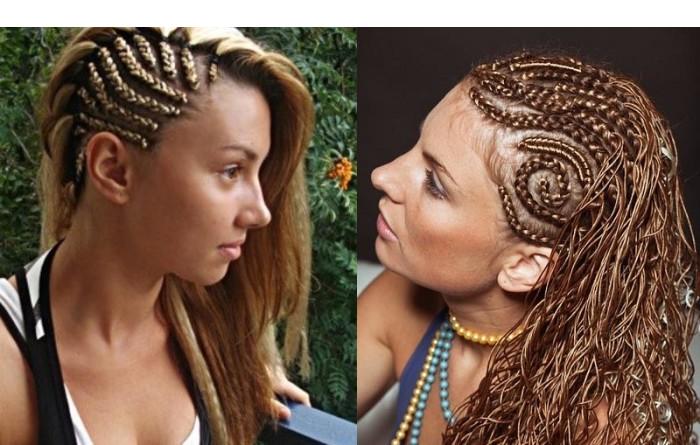

Finally, it should be said that braids still have some restrictions and contraindications, mainly related to the condition of the hair: with a tendency to fall out, as well as severe fragility, it is forbidden to perform such a hairstyle.
Chupacabra
Experienced stylists and hairdressers do not recommend washing your hair for a couple of days before weaving braids.